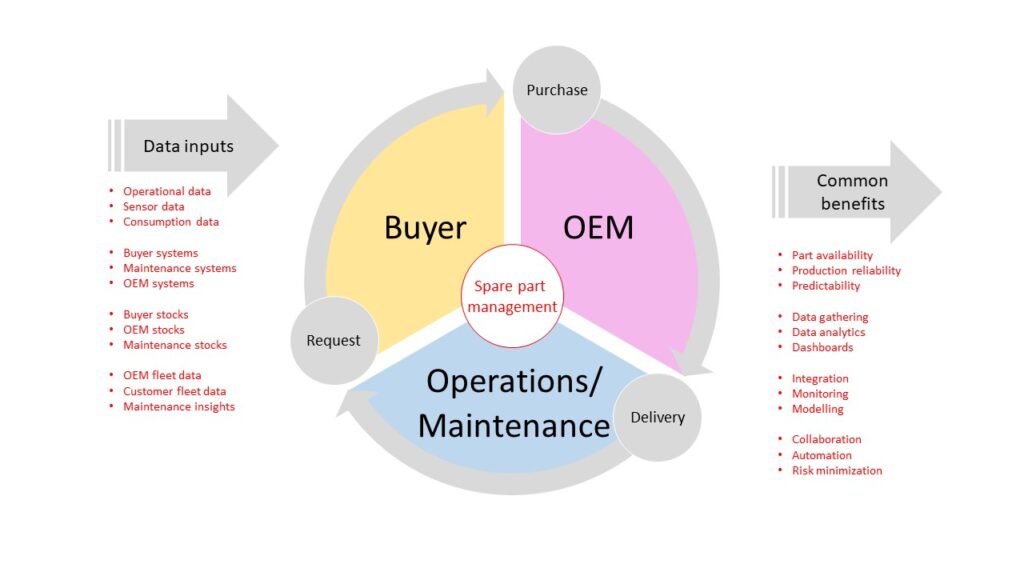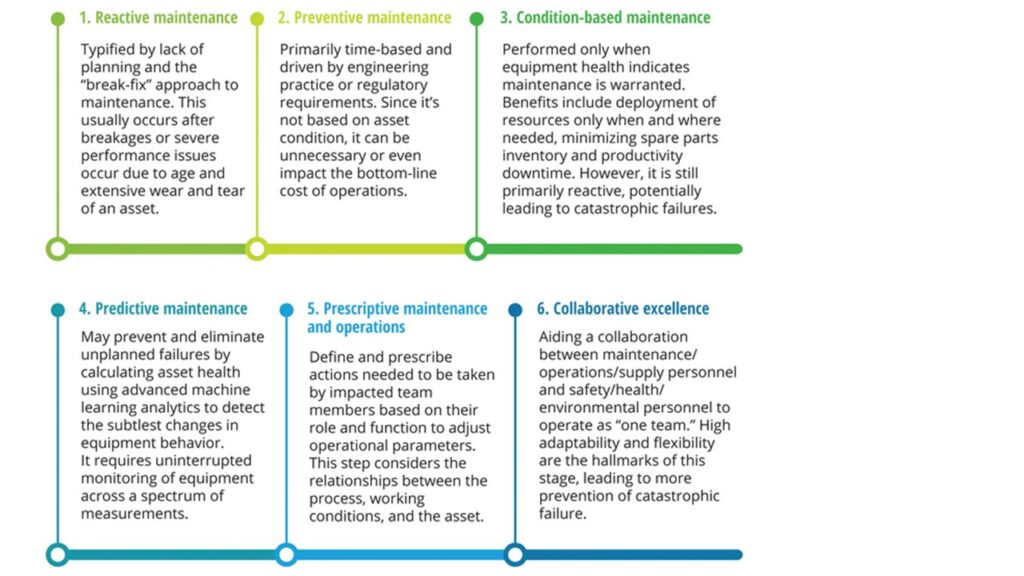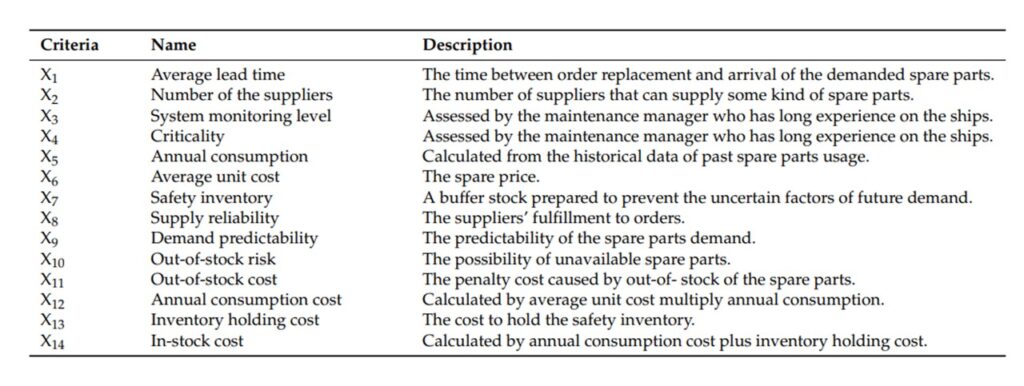
By 2023, 50% of all supply chain forecasts will be automated using artificial intelligence. Spare part data is the key for future original equipment manufacturer (OEM) spare parts business.
Authors: Lauri Eskelinen & Brett Fifield
Manufacturing, being one of the most innovative industries, is under constant development to pursue longevity, profitability, and sustainability (Howley 2021). This is driving the market for Artificial Intelligence in the industry, which can help companies save costs by improving operational efficiency and supply chain resiliency (Hood 2022):
- Automatic link between supply and demand to improve part availability
- Working capital efficiency and inventory size optimization
- Transparency in procurement process and analysis of historical data
- Logistics route optimization in deliveries, timing, and pricing
- Improved environmental sustainability, reduced carbon footprint via optimized shipments
Why is this important to consider from the perspective of an industrial OEM’s spare parts business? Organizations are building resiliency against supply chain disruptions and improving decision-making framework by embracing Industry 4.0 to extract real-time data from operators, systems, and equipment (Galer 2022). To meet the increasing customer demands, and to stay competitive in the game of artificial intelligence, and digitalization in general, industrial OEMs must generate, maintain, and leverage high quality spare part data.
In recent research “Spare part business growth strategy – a case study on an industrial OEM’s capital project”, Eskelinen (2022) proposes a collaborative business model between OEM, Maintenance and Procurement organizations. Figure 1 displays an example how the different organizations can together run spare parts management by collaborating with data and information sharing.

Figure 1: Collaborative spare part business model (Eskelinen 2022, 79)
In a case study of a major process equipment delivery project by an industrial OEM, the utilization of spare part data in closer collaboration with customer’s maintenance and purchasing organizations was shown to improve the OEM’s spare part business potential. A presumption of the case company
missing significant spare part business revenues due to suboptimal strategies and efforts was confirmed during the case study, and as a summary, improvements were suggested on the following four strategic areas: spare part data quality, collaborative digital strategies, installed base data and project organization’s setup and communication. (Eskelinen 2022.)
In the context of relevance to industrial spare parts business, artificial intelligence, and data management, the following four topics will be discussed in this article:
- Industrial asset management
- Installed base information
- Spare parts classification
- Spare parts consumption forecasting
Industrial asset management
Manufacturing companies are concerned about the entire lifecycle of plant assets, including equipment and spare parts, but also production lines and real estate. Industrial asset management is about the continuous planning, controlling and optimization of physical assets to minimize the cost, and maximize the reliability and availability (Balali et al. 2020, 21).
Figure 2 describes six different asset management approaches, that are all viable options depending on the criticality and risk associated with each asset. Advancing from the first level of reactive maintenance requires merging of information technology with operations technology, and broader data sharing between different stakeholders. The data and information generated by all the different connected assets should be analyzed and distributed throughout the organization to enable data-driven decision-making. As the asset performance management program evolves in maturity, a closer collaboration is required between asset owners, service providers, on-site crews, and original equipment manufacturers. (Daecher et al. 2022.)

Figure 2: Asset performance management has different levels of maturity (Deloitte 2022)
The implications for the OEM spare part business are that close collaboration is needed with the customer organization to understand their maintenance strategies, and that the systems and data management policies need to be sophisticated enough to meet the customer demands. The case study by Eskelinen (2022) demonstrated that a dedicated project spare parts coordinator enables new business opportunities by having a single responsible person to coordinate all internal and external communications who commits to understanding the needs of all stakeholders.
The figure 3 explains the challenges of information management and data collection from the asset management perspective, and proposes data modelling, big data analytics or IoT framework as enabling technologies. The industrial OEM in the case study was shown to lean heavily on traditional product orientation, instead of service orientation, and many data management related improvements were identified that would improve the future spare parts business potential over the lifecycles of the delivered equipment (Eskelinen 2022).

Figure 3: Challenges and advice for information and data management in asset management (Polenghi et al. 2021)
Installed base information
Installed base refers to the population of equipment or machines that are in use and where the spare parts are installed. Equipment manufacturers offer various after-sales services, such as maintenance and repairs, to their installed base of products. The stochastic nature of replacement or repair of a failed part, combined with the large number of parts with long lifetime, typically result in significant capital having to be tied up in spare part inventories. As spare part demand is dependent on numerous different factors, past consumption is not always an accurate future prediction model. (Van der Auweraer et al. 2021, 1.) The case study demonstrated that industrial customers are interested in collaborative business models with the OEMs, and especially in those that reduce the amount of capital tied up in spare part inventories. A consignment stock model for production wear parts was developed and sold to the case project customer. (Eskelinen 2022.)
Companies collect a lot of data, store them in different databases managed by different departments. Consequently, installed base data may be scattered and therefore useless for accurate
forecasting purposes (Van der Auweraer et al. 2021, 11). These problem areas related to installed base data were also identified in the case study by Eskelinen (2022). Firstly, the OEM loses connection to the equipment once it is delivered to customers. Secondly, the installed base data stored in the ERP system of the OEM only represents the as-built information from the perspective of the OEM manufacturer. The case study revealed that customer organizations manage their plant data, process hierarchies and functional locations with their own logic that is vastly different to the OEM’s system. (Eskelinen 2022.) A strong argument can be made that the OEM installed base data is useless when it only represents their own perspective and does not take into consideration how the customer is managing their assets, and does not receive information about operational data, maintenance activities, part changes and so on.
Van der Auweraer et al. (2021) use a comparative simulation study to identify which installed base information adds most value to inventory control and spare part demand forecasting purposes. The use of installed base information offers an alternative to time-series methods, enabling failure prediction and spare part demand by comprising information on the installed base size, the age of the equipment and parts and the part reliability. The main results can be summarized as:
- Knowing the size of the active installed base is most valuable when the installed base is changing over time.
- It is important to keep track of the active installed base by considering new machine sales and discards. Machines that have reached the end of their lifetime are discarded, and only the active installed base generates demands, making it the foundation for future forecasts.
- It is important to work with the part age itself, rather than the machine age, when a failure-based prediction model is used. It is important to know the time since replacement of a part, besides the time since installment of the machine.
- When part age information is not possible to collect, a logistic regression on the machine age is a valuable alternative to a failure-based prediction model.
Spare parts classification
The case study by Eskelinen (2022) revealed inconsistencies in spare part classification criteria between the different product groups of the OEM. A major capital project in the case OEM’s industry typically involves participation of numerous different divisions, subsidiaries, and product groups. The spare part lists received by the customers typically contain, for example, recommended stock quantities, wear or spare part indications and lead times. However, the customer receives lists in many different formats and with different classification criteria. To utilize artificial intelligence, advanced industrial asset management methods or leverage installed base data, the spare part classification data must be consistent and reflect the customers’ needs.
Spare parts classification management supports decision-makers in optimizing inventory strategies in terms of costs and reliability. ABC and VED analyses are examples of basic classification methods where spare parts are arranged according to one criterion. The ABC method divides parts into three categories based on annual cost and inventory criteria. The VED analysis takes a qualitative approach in determining spare parts criticality with the help of experts. In practice, these basic methodologies are subjective due to single criterion and do not fully reflect the management requirements. Adding a value assessment system that consider the expertise of maintenance, material managers, quality personnel and designers have developed into multi-criteria classification methods such as Analytic Hierarchy Process or Multi-Attribute Spare parts Tree Analysis. To fill in the gaps of subjective matrix assignations and lack of learning ability in multi-criteria classification methods, heuristic intelligent algorithms have been developed, such as Data Envelopment Analysis, Support Vector Machine or Artificial Neural Network. (Yang et al. 2021, 1-2.) Additionally, Teixeira et al. (2018), combined maintenance and logistics perspectives, the two main areas that are typically involved in spare parts management, into a multi-criteria classification model.
Yang et al. (2021) introduces a multi-criteria spare parts classification method using a Graphic Deep Convolutional Neural Network Method, which is a deep learning method for image identification and classification. The case study is an interesting methodology of utilizing visualization and machine learning to optimize inventory management with multi-criteria classification through image identification based on explainable hierarchical structure.
The G-DCNN model was applied in a case study of ship systems. A ship has an average lifespan of 30-50 years, requires regular repairs and maintenance and has over 4000 maintainable components. The whole fleet consists of 73 ships which creates a massive challenge for spare parts purchasing and stocking decisions to ensure reliable operation without carrying excessive spare part inventories. (Yang et al. 2021, 8.). The figure 4 defines the classification criteria used in the case study, which is a good example of what criteria can be considered in spare part classification.

Figure 4: Multiple spare parts classification criteria (Yang et al. 2021, 9.)
Most of the research and case studies related to spare parts management and classification take the perspective of the owners of the assets, and less research material is available with the perspective of the OEMs or suppliers of equipment and spare parts. The after-sales service perspective of OEMs is under-represented in spare parts classification literature, and most case studies are about aviation, automotive and domestic appliance industries. Also, there is a lack of research on integrating spare parts inventory control with classification and forecasting, and the possibilities of machine learning in clustering and classification of spare parts. (Bhalla et al. 2021, 982-988). Therefore, industrial OEMs should consider further researching the possibilities of proactive participation in spare parts management and classification with their customers.
Spare parts consumption forecasting
Understanding industrial asset management and maintenance strategies, controlling the installed base data, and having a systematic approach to spare parts classification support accurate spare parts consumption forecasting. A collaborative maintenance pre-engineering project together with the OEM, maintenance and customer’s operations and procurement teams was tested in a case study. Spare parts provisioning planning, setting up the system for item identification coding and the stock planning is a massive task in an industrial production plant project. A conclusion of the research is that the OEM has many lucrative spare part business opportunities in offering different added services related to, for example, stock planning, spare part supply contracts, consignment stocks, or simply to selling high quality equipment spare part data. (Eskelinen 2022.) The following paragraphs are examples from different industries, and the main observation is that the needs for spare parts management are similar in various fields.
In defense sector, inventory management for spare parts is a key issue in that affects the operational availability of systems, which is the main performance measure of maintenance, repair, and overhaul organizations that focus on fleet maintenance. The defense sector generally faces budgetary restrictions, strict procurement guidelines and long lead times compared to civil sectors. Spare part stock allocation, stock redistribution and purchasing planning are key processes that directly affect the fleet’s operational availability. (García-Benito & Martín-Pena 2021, 178, 191.)
A case study of spare part prediction using frailty model in mining industry suggest that ignoring the effect of unobserved risk factors can lead to unrealistic estimations. Failure and repair data, or reliability data, can be used to estimate the minimum number of required spare parts. In the mining industry, the operational environment, rock properties and the technical behavior of the system are heterogenous conditions that may have significant variance over time. Therefore, effective spare part planning should take into consideration the heterogeneity among the reliability data. Besides calculating the mean times to failure and the standard deviation of failure, the application of frailty-model to isolate the effect of unobserved and observed risks provide a more realistic spare part estimation. (Barabadi et al. 2021.)
A prediction method case study on aeronautics equipment show that significant inventory reductions can be achieved by considering a requirement prediction method that considers spare part sharing. Spare parts are also crucial in military aeronautics context. Simulation methods are used to ensure optimal mission and task capacity of an aircraft squadron, by coordinating the number of aircraft, maintenance personnel, facilities, and spare parts. Special spare parts are items that are only installed in specific equipment, whereas shared spare parts are items that are installed in various types of equipment. The spare part storage costs of combat forces and the maintenance supports costs respectively can be reduced with spare part sharing. (Yanluo 2021, 1-8.)
Spare parts sharing provides new business opportunities (Eskelinen, 2022). As illustrated in the collaborative spare part business model (figure 1), besides the OEM company, customer buyer and maintenance organization can utilize the information of all their installed bases, or assets, in all locations. Spare parts data and information are the key and having a transparent information sharing model could help in reducing the spare part inventory values when maintenance stock planning could consider the whole network of OEM stock capabilities.
Summary
Artificial intelligence and machine learning are just some examples of the on-going industrial revolutions. The OEMs should make sure they have all the basics covered in their data management to ensure competitiveness in the future spare parts business. One vision of the industry 5.0 is that it will bring back human touch to manufacturing industry, emphasize collaboration between human and machines, and favor mass customization and tailored solutions according to customers’ unique needs (Maddikunta et al. 2022, 2). According to the research results, industrial OEMs can gain competitive advantages and create new spare part business opportunities by closely collaborating with customer’s purchasing and maintenance organizations and participating in the spare part supply chain management operations (Eskelinen 2022).
Some key strategic considerations for an industrial OEM looking to improve their spare part business growth potential are to ensure that they know their customers and understand how industrial asset management, installed base information, spare parts classification and spare parts consumption forecasting are relevant in their contexts. Knowing the customer maintenance policies and the maturity level of their digital capabilities may open opportunities for tailored service offerings. Maintaining accurate and up-to-date information about installed bases, understanding how customers manage their fleet data, and getting information about the changes and updates on equipment and part level are important. The OEMs should evaluate their logics for spare parts classification and ensure that the data is consistent and relevant for modern maintenance, supply chain and stock planning purposes. Proper data management and information sharing between OEM, maintenance and purchasing organizations enable better spare parts consumption forecasting, better operational availability and reliability of systems and more cost-effective inventory management.
References
Balali, F., Nouri, J., Adel, N., Zhao, T. 2020. Industrial asset management and maintenance policies. Data Intensive Industrial Asset Management, 21-41. Cited 14 May 2022. Available at http://dx.doi.org/10.1007/978-3-030-35930-0_2
Barabadi, R., Ataei, M., Khalokakaie, R., Nouri, Q. 2021. Spare-part Management in a Heterogeneous Environment. PLoS ONE, vol. 16, no. 3. Cited 15 May 2022. Available at https://doi.org/10.1371/journal.pone.0247650
Bhalla, S., Alfnes, E., Hvolby, H., Sgarbossa, F. 2021. Advances in Spare Parts Classification and Forecasting for Inventory Control: A Literature Review. IFAC-PapersOnLine, Volume 54, Issue 1, 982-987. Cited 14 May 2022. Available at https://doi.org/10.1016/j.ifacol.2021.08.118
Daecher, A., Das, D., Dunn, P., Sniderman, B. 2022. Asset performance management: Driving value beyond predictive maintenance. Cited on 10 May 2022. Available at https://www2.deloitte.com/us/en/insights/focus/industry-4-0/asset-performance-management-equipment-reliability.html
Eskelinen, L. 2022. Spare part business growth strategy – a case study on an industrial OEM’s capital project. Master’s thesis. LAB University of Applied Sciences, School of Business and Management. Cited 14 May 2022. Available at https://urn.fi/URN:NBN:fi:amk-2022053013223
Galer, S. 2022. How manufacturers supercharge massive supply chain advantage with industry 4.0. Cited 10 May 2022. Available at https://www.forbes.com/sites/sap/2022/05/03/how-manufacturers-supercharge-massive-supply-chain-advantage-with-industry-40
García-Benito, J. & Martín-Peña, M. 2021. A redistribution model with minimum backorders of spare parts: A proposal for the defense sector. European Journal of Operational Research, Volume 291, Issue 1, 178-193. Cited 14 May 2022. Available at https://doi.org/10.1016/j.ejor.2020.09.014
Hood, S. 2022. AI in Manufacturing: 5 Ways to Increase Resilience & Future-Proof the Supply Chain. Cited 10 May 2022. Available at https://blog.the7bridges.com/blog/ai-manufacturing-increase-resilience-future-proof-supply-chain
Howley, J. 2021. What are the most innovative industries? Cited 10 May 2022. Available at https://kene.partners/what-are-the-most-innovative-industries
Maddikunta, P., Pham, Q., Deepa, P., Dev, K., Thippa, R., Ruby, R., Liyanage, M. 2022. Industry 5.0: A survey on enabling technologies and potential applications. Journal of Industrial Information Integration, Volume 26. Cited 15 May 2022. Available at https://doi.org/10.1016/j.jii.2021.100257
Polenghi, A., Roda, I., Macchi, M., Pozzetti, A. 2021. Information as a key dimension to develop industrial asset management in manufacturing. Journal of Quality in Maintenance Engineering, Vol. ahead-of-print No. ahead-of-print. Cited 14 May 2022. Available at https://doi.org/10.1108/JQME-09-2020-0095
Teixeira, C., Lopes, I., Figueiredo, M. 2018. Classification methodology for spare parts management combining maintenance and logistics perspectives. Journal of Management Analytics. 5:2, 115-135. Cited 14 May 2022. Available at http://dx.doi.org/10.1080/23270012.2018.1436989
Van der Auweraer, S., Sha, Z., Robert, N. 2021. The value of installed base information for spare part inventory control. International Journal of Production Economics, Vol 239, 108186. Cited 10 May 2022. Available at https://doi.org/10.1016/j.ijpe.2021.108186
Yang, K., Wang, Y., Fan, S., Mosleh, A. 2021. Multi-Criteria Spare Parts Classification Using the Deep Convolutional Neural Network Method. Applied sciences, 11, 7088. Cited 15 May 2022. Available at http://dx.doi.org/10.3390/app11157088
Yanluo, G. 2021. Prediction model of aeronautics equipment spare parts considering spare part sharing. IOP conference series: Materials Science and Engineering, Vol 1043, 042040. Cited 14 May 2022. Available at https://doi.org/10.1088/1757-899X/1043/4/042040
Authors
Lauri Eskelinen is a Master’s Student in the Business Faculty at Lab University of Applied Sciences.
Brett Fifield is a Principal Lecturer in the Business Faculty at Lab University of Applied Sciences.
Illustration: https://pxhere.com/fi/photo/1137188 (CC0)
Published 6.6.2022
Reference to this article
Eskelinen, L. & Fifield, B. 2022. Data driven decision making in industrial spare part business. LAB RDI Journal. Cited and date of citation. Available at https://www.labopen.fi/lab-rdi-journal/data-driven-decision-making-in-industrial-spare-part-business/






